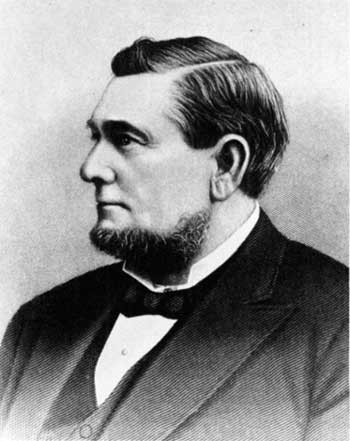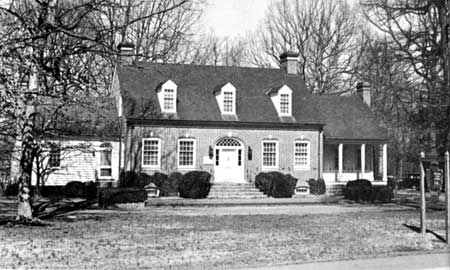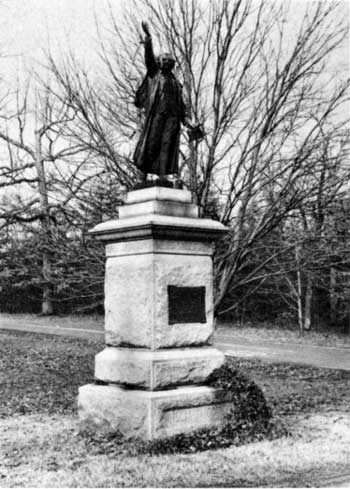|
GUILFORD COURTHOUSE National Military Park |
 |

Judge David Schenck rescued the Guilford
battlefield from oblivion by establishing the Guilford Battle Ground
Company in 1887.
From a portrait donated to the National Park
Service by Paul W. Schenek, after an engraving by F. G. Kernan and
Company, New York.
The Guilford Battle Ground Company
Creation of the battlefield park was largely due to the vision, the energy, and the devotion of Judge David Schenck of Greensboro, N.C., who in the early 1880's was accustomed to make frequent visits to the area for the purpose of studying the battle. On one of these visits in October 1886, Judge Schenck suddenly decided to purchase the site in order to rescue it from oblivion. It was nearly sundown, but an irresistible urge to carry out this scheme spurred him to immediate action, and before the twilight had faded, he had bargained for 30 acres of land.
Soon after his initial activity, Judge Schenck succeeded in imparting some of his enthusiasm for the battleground venture to a group of his intimate friends, and together they determined to place the enterprise on a firm basis. They incorporated under the name of The Guilford Battle Ground Company and petitioned the State Legislature for a charter. An act of incorporation, passed by the legislature and ratified on March 7, 1887, stated that the corporation would exist "for the benevolent purpose of preserving and adorning the grounds on and over which the battle of 'Guilford Court House' was fought" and the "erection thereon of monuments, tombstones, or other memorials to commemorate the heroic deeds of the American patriots who participated in this battle for liberty and independence."

The Park Visitor Center.
In May of the same year, the stockholders enumerated in the charter held their first meeting, organized the company, and elected Judge Schenck to the presidency, a position he held for many years. The company then set to work vigorously to carry out the purposes for which it had been formed. Stock was sold at $25 a share and, as money came in from the sale of stock, more land was purchased. It seems to have been an accepted indication of good citizenship in the community to own one or more shares of stock in the company and, by 1893, stock was owned by 100 individuals and corporations. As it obtained land, the company proceeded to develop the battlefield. Woodlands were cleared and monuments were erected. During the 30 years of the company's existence, between 20 and 30 monuments were erected in the area—some by the company, some by individuals, and others by governmental units, including the United States and the State of North Carolina. The company also erected a small museum and acquired a number of 18th- and early 19th-century items for exhibit. A part of this museum collection is now on display in the visitor center at Guilford Courthouse National Military Park.
In addition to its program for the development of the battlefield, the Guilford Battle Ground Company desired to make its property a historic shrine—a repository for the remains of patriotic and distinguished individuals. As a result, the remains of six persons were secured and reinterred on the battlefield. Among these were two of the North Carolina signers of the Declaration of Independence, a North Carolina senator, and a Governor of the State.

The Hooper-Penn-Hewes Monument is a memorial to
the three North Carolina signers of the Declaration of
Independence.
Under the auspices of the company, annual patriotic celebrations were held on the "Battle Ground," a name still used locally to designate the park; and on these occasions, usually July 4, the people of the surrounding country gathered almost en masse.
In 1931, the Battle of Guilford Courthouse was reenacted by units of the National Guard in commemoration of the sesquicentennial anniversary of the battle.

|

| History | Links to the Past | National Park Service | Search | Contact |
|
Last Modified: Mon, Dec 2 2002 10:00:00 am PDT |

